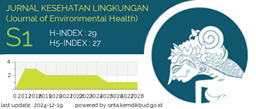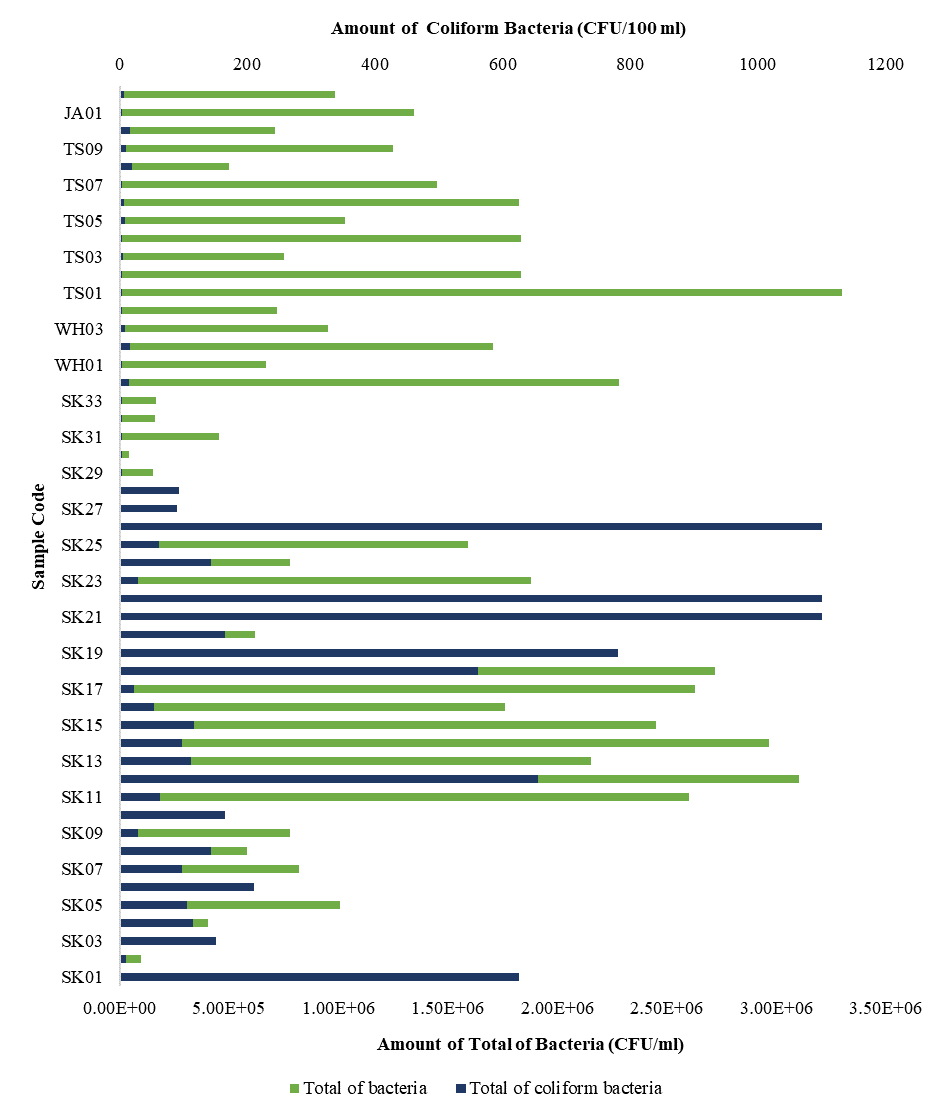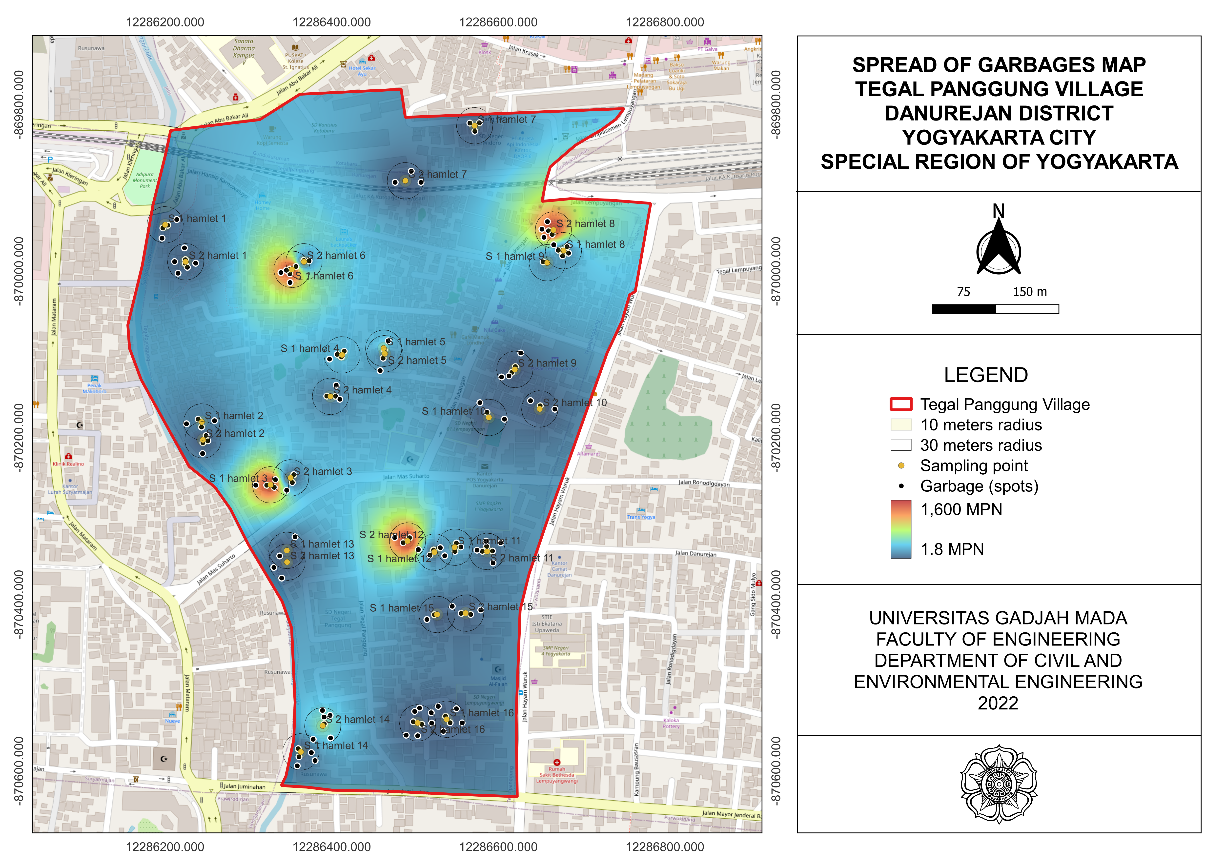Education Can Improve Community Participation in the Control of Dengue Haemorrhagic Fever in Cicadas and Babakan Penghulu Village, Bandung City, a Case of Participation Measurement Using the Method of Arnstein
Downloads
Introduction: According to the Ministry of Health, cases of dengue haemorrhagic fever (DHF) increased from 2 to 34 provinces during 46 years, hence, Indonesia had not been able to control DHF. While specific drugs and vaccines against DHF virus are not yet available, the only way to control DHF is by controlling the vector. Sustainable Development Goals (SDG's) program on vector borne diseases requires a reduction of mortality by 75% and incidences by 60% in 2030. Vector control in Indonesia is being done through community participation such as draining, closing, and recycling used goods, and activities to avoid mosquito bites known as "3M Plus”. There is, therefore, a need to measure the degree of community participation being done so far and the factors that influence it. Methods: Measurement of the level of community participation was carried out using the method of Arnstein (A Ladder of Citizen Participation). The variables used in the measurements were the understanding, the benefits, and the implementation of participation in the 3M Plus program. The research location was chosen based on the mapping of areas with high and low DHF incidence. Samples were determined by the Slovin method, stratified by permanent, semi permanent, and non permanent houses. Data collection were carried out by interviews. Factors that influence community participation are measured by statistical tests, namely multiple linear regression. Result and Discussion: The largest level of community participation is still at the level of manipulation (no participation) with a percentage of 50.5% in Cicadas and 65.6% in Babakan Penghulu; statistical analysis shows that education education had a significant influence in both villages. Conclusion: There has been no actual community participation yet. Therefore, comprehensive education and counseling are needed for the entire community. Considering that breeding places are not only found in settlements, it is necessary to collaborate with other sectors, such as agriculture, environment, fisheries, irrigation, finance, tourism, transportation, urban areas, livestock, forestry, and infrastructure.
Soemirat J. Kesehatan lingkungan. Yogyakarta : Gadjah Mada University Press; 2014.
World Health Organization. Global vector control response 2017 - 2030. Switzerland: World Health Organization; 2017.
Ministry of Health Republic Indonesia. Regulation of Ministry of Health Republic Indonesia No.01.11/MENKES/591/2016 about Implementation of Mosquito Nest Eradication 3M Plus with "Satu Rumah Satu Jumantik" Movement. Jakarta: Ministry of Health Republic Indonesia; 2016.
Arnstein SR. A ladder of Citizen Participation. J American Planning Association. 1969;35(4):216-224. https://doi.org/10.1080/01944366908977225
Dewi LS, Tan F, Nazer M. Menapaki Tangga Arnstein dalam Perencanaan Tata Ruang (Studi Kasus Kecamatan Aua Birugo Tigo Baleh Kota Bukit Tinggi). J Spasial 2019;6(1):19-26. http://ejournal.stkip-pgri-sumbar.ac.id/index.php/spasial/article/download/3318/pdf
Awaluddin A. Korelasi Pengetahuan dan Sikap Keluarga terhadap Tindakan Pencegahan Demam Berdarah Dengue. J Endurance. 2017;2(3):263-269. https://doi.org/10.22216/jen.v2i3.2084
Trapsilowati W, Agustini M, Setiyaningsih R. Pelatihan Pengendalian Vektor Demam Berdarah Dengue di Kabupaten Sukoharjo. Med Penelitian Pengembangan Kesehatan. 2015;24(3):137-142. https://dx.doi.org/10.22435/mpk.v24i3.3648
Sari M. Hubungan Perilaku dengan Kepadatan Vektor Demam Berdarah Dengue (DBD) di Kelurahan Kuranji Kecamatan Kuranji Kota Padang. Human Care Journal. 2018;3(2):10-18. http://dx.doi.org/10.32883/hcj.v4i1.86
Sukesi T, Supriyati S, Satoto T. Pemberdayaan Masyarakat dalam Pengendalian Demam Berdarah Dengue (Literature Review). J Vektor Penyakit. 2018;12(2):67-75. https://doi.org/10.22435/vektorp.v12i2.294
Soleh AZ. Ilmu Statistika Pendekatan Teoritis dan Aplikatif Disertai Contoh Penggunaan SPSS. Bandung: Rekayasa Sains Bandung; 2005.
Tyas F, Kumalawati R. Hubungan Kondisi Sosial Ekonomi dengan Kualitas Rumah Tinggal di Kecamatan Banjarmasin Tengah Kota Banjarmasin. JPG. 2018;5(1):12-20. http://dx.doi.org/10.20527/jpg.v5i1.4985
Maulana R, Nurini N. Tingkat Partisipasi Masyarakat dalam Pelestarian Kampung Kauman Surakarta. TATALOKA. 2019;21(3):473-481. https://doi.org/10.14710/tataloka.21.3.473-481
Naftassa Z, Putri T. Hubungan Jenis Kelamin, Tingkat Pendidikan dan Pengetahuan terhadap Kejadian Skabies pada Santri Pondok Pesantren Qotrun Nada Kota Depok. Biomedika. 2018;10(2):115-119. https://doi.org/10.23917/biomedika.v10i2.7022
Hayana. Hubungan Sosial Ekonomi dan Budaya terhadap Partisipasi Ibu Rumah Tangga dalam Pengelolaan Sampah di Kecamatan Bangkinang. J Kesehatan Komunitas. 2015;2(6):294-300. https://doi.org/10.25311/keskom.Vol2.Iss6.92
Respati T, Raksanagara A, Djuhaeni H. Model Program Demam Berdarah Dengue, Peran Serta Masyarakat, Serta Sanitasi Dasar di Kota Bandung. Majalah Kedokteran Bandung. 2018;50(3):159-166. https://doi.org/10.15395/mkb.v50n3.1239
Azam M, Azinar M, Fibriana AI. Analisis Kebutuhan dan Perancangan "Ronda Jentik” Sebagai Model Pemberdayaan Masyarakat dalam Pembarantasan Sarang Nyamuk. Unnes J Public Health. 2016;4(4):294-305. https://doi.org/10.15294/ujph.v5i4.12592
Kirana K. Pawenang ET. Analisis Spasial Faktor Lingkungan pada Kejadian Demam Berdarah Dengue di Kecamatan Genuk. Unnes J Public Health. 2017;6(4):226-231. https://doi.org/10.15294/ujph.v6i4.10543
Ministry of National Development and Planning. Roadmap of SDGs Indonesia : A Highlight. Jakarta: Ministry of National Development and Planning; 2015.
Heriawati D, Umami S, Supardan D, Suhirman. Distribution of Aedes Albopictus Mosquitoes in Indonesia. In: 2nd International Conference on Islam, Science and Technology. 2020;408:194-199. https://doi.org/10.2991/assehr.k.200220.035
Arfan I. Keberadaan Jentik Aedes Sp Berdasarkan Karakteristik Kontainer di Daerah Endemis dan Non Endemis Demam Berdarah Dengue. J Ilmiah Ilmu Kesehatan. 2019;5(2):258-266. https://doi.org/10.33485/jiik-wk.v5i2.140
Ramadhani F, Yudhastuti R, Widati S. Pelaksanaan PSN 3M Plus untuk Pencegahan Demam Berdarah Dengue (Studi Kasus Masyarakat Desa Kamal). Gorontalo Journal of Public Health. 2019;2(2):139-145. https://doi.org/10.32662/gjph.v2i2.584
Sinta P. Hubungan Perilaku 3M Plus Masyarakat Dengan Kejadian DBD di Wilayah Kerja Puskesmas Gambirsari Surakarta. J Ilmiah Kesehatan Media Husada. 2018;7(2):93-104. https://doi.org/10.33475/jikmh.v7i2.25
Endartiwi S. Pengaruh Sikap Kader Kesehatan Terhadap Pengendalian Demam Berdarah Dengue. J Manajemen Kesehatan Yayasan RS Dr Soetomo. 2018;4(2):84-97. https://doi.org/10.29241/jmk.v4i2.111
Zulaikhah ST, Yusuf I. Pengaruh Penyuluhan terhadap Kepadatan Aedes aegypti dalam Pencegahan Demam Berdarah. J Fakultas Kesehatan Masyarakat. 2017;12(1):1-7. http://dx.doi.org/10.12928/kesmas.v12i1.6627
Ernawati K, Widianti D, Yusnita Y, Batubara L, Jannah F, Rifqaatusa'adah RA. Hubungan Paparan Informasi dengan Pengetahuan Pengendalian Vektor Nyamuk DBD di Desa Koper, Kecamatan Kresek, Kabupaten Tangerang. YARSI Medical J. 2020;27(3):144-151. https://doi.org/10.33476/jky.v27i3.1267
Pratiwi D, Hargono R. Analisis Tindakan Warga Desa Payaman dalam Mencegah Penyakit DBD. J PROMKES. 2018;5(2):181-192. http://dx.doi.org/10.20473/jpk.V5.I2.2017.181-192
Sukendra DM, Indrawati F, Hermawati B. Perbedaan Pengetahuan Ibu Terkait Demam Berdarah Dengue dan Praktik Pencegahan dengan Suna Trap. HIGEIA. 2017;1(4):143-153. https://journal.unnes.ac.id/sju/index.php/higeia/article/view/17828
Sukesi T, Supriyati S, Satoto TBT. Pemberdayaan Masyarakat dalam Pengendalian Demam Berdarah Dengue (Literature Review). J Vektor Penyakit. 2018;7(1):67-76. https://doi.org/10.22435/vektorp.v12i2.294
2. Formal legal provisions to access digital articles of electronic journal are subject to the provision of the Creative Commons Attribution-ShareAlike license (CC BY-NC-SA), which means that Jurnal Kesehatan Lingkungan is rightful to keep, transfer media/format, manage in the form of databases, maintain, and publish articles.
3. Published manuscripts both printed and electronic are open access for educational, research, and library purposes. Additionally, the editorial board is not responsible for any violations of copyright law.
JKESLING by UNAIR is licensed under a Creative Commons Attribution-ShareAlike 4.0 International License.







































